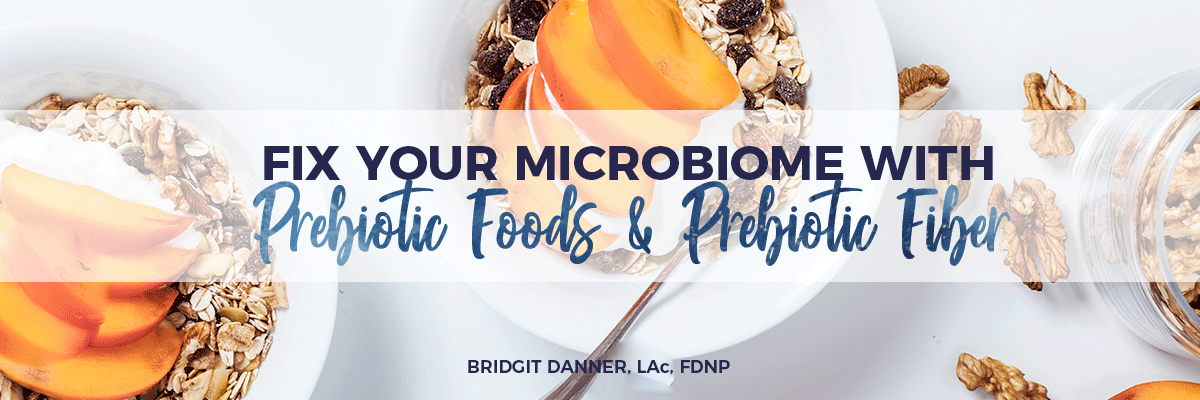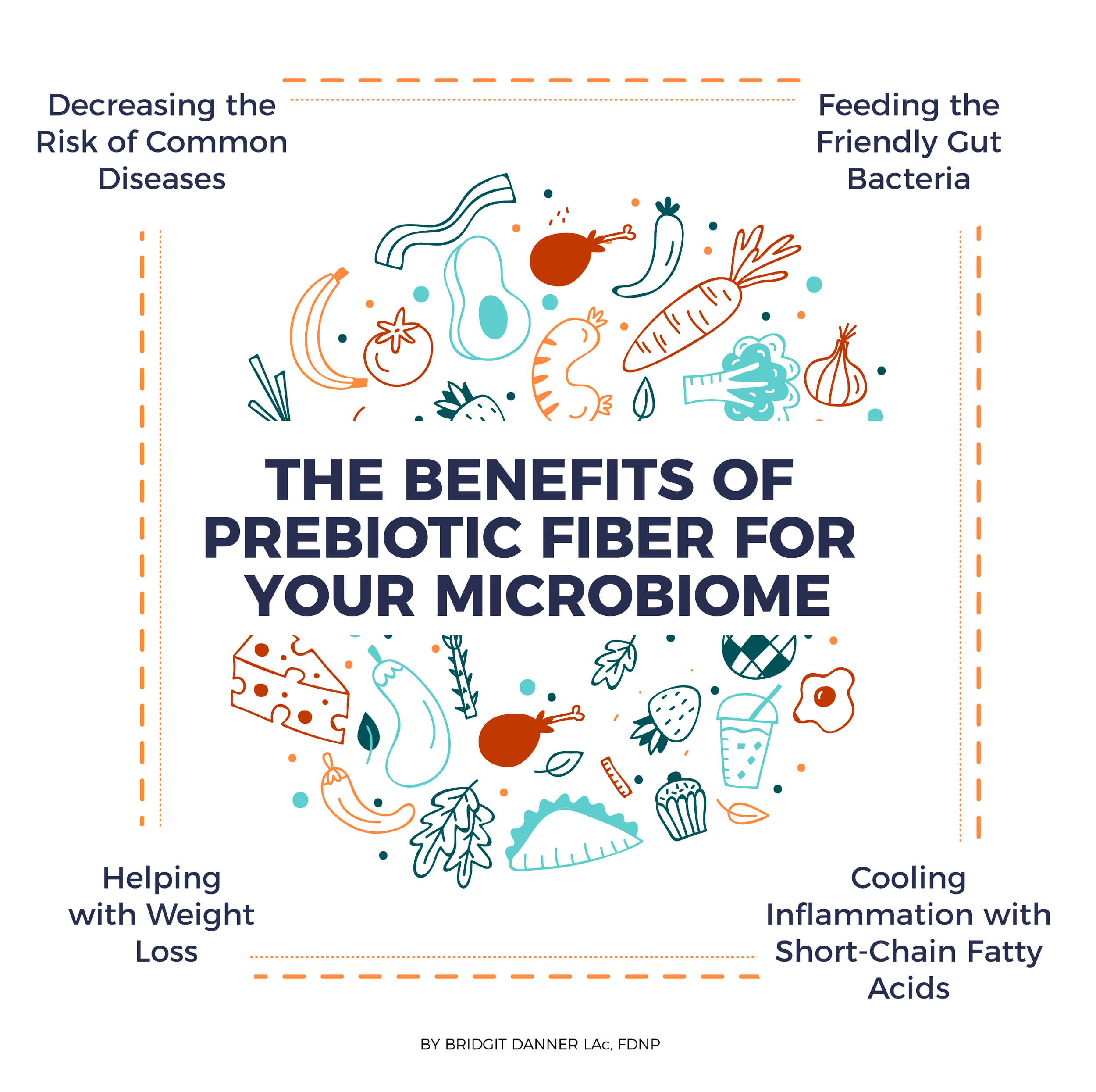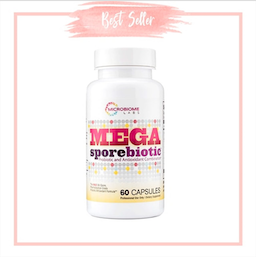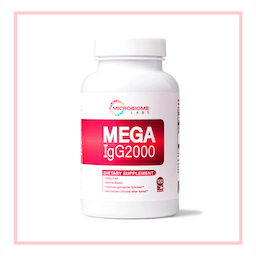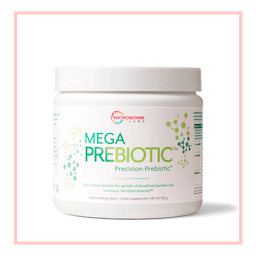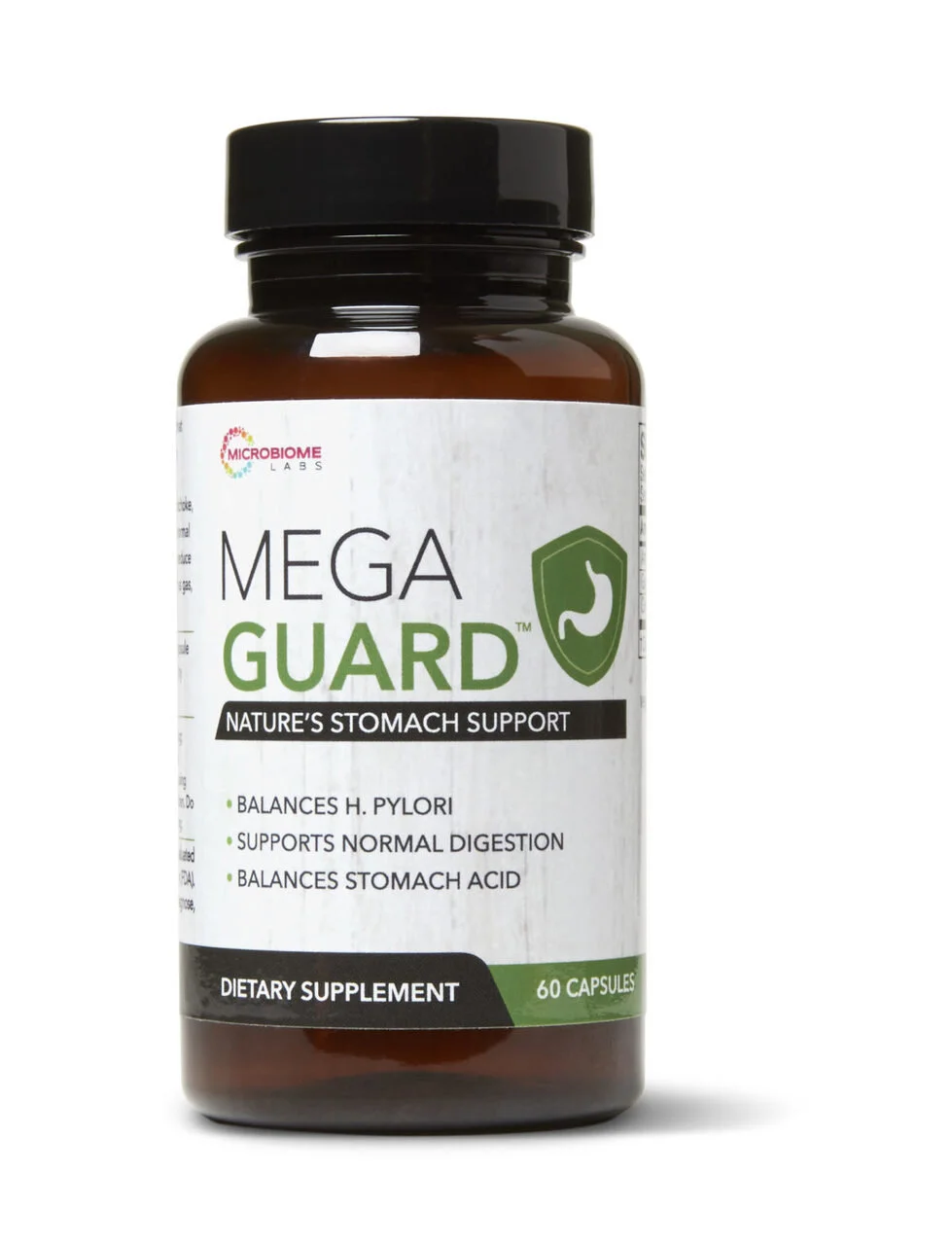Fix Your Microbiome with Prebiotic Foods and Prebiotic Fiber
How Prebiotic Fiber Can Help Decrease Inflammation, Fight Obesity, and More
Your microbiome determines a lot about your overall health. We know that it can play a role in the development of inflammation in the body, linking it to other conditions like heart disease, obesity, and diabetes. What if you could correct or prevent some of these conditions by introducing prebiotic fiber into your diet?
Fiber is a key component to making your microbiome more hospitable to the “good” bacteria and limiting the number of uncomfortable digestive symptoms you may have.
Prebiotic fiber actually feeds the good bacteria in your gut and helps it thrive.
Read on to learn more about how prebiotic products could dramatically alter your health.
The Benefits of Prebiotic Fiber for Your Microbiome
Scientists are exploring the important part that the microbiome plays in health, and new research shows that fiber could be the star of the show. We have always known that we should have a significant source of fiber in our diets, but we have not always known precisely how it works. I’ll share a few of the known benefits below!
Prebiotics: Decreasing the Risk of Common Diseases
It’s no secret that a diet heavy in natural sources of fiber (usually stemming from fresh fruits and vegetables) is linked to a decrease in the development of certain disorders including diabetes, heart disease, and arthritis. (1) As new research regarding our microbiome is exploding, it is becoming clearer how fiber affects our bodies.
Prebiotics: Feeding the Friendly Gut Bacteria
The fiber we consume feeds billions of friendly bacteria that live in our guts. The dietary fiber that our bodies have a hard time breaking down actually feeds a layer of helpful bacteria that reside on top of the gut.
If our diets decline in fiber, these bacteria eventually die off. The intestines shrink and the mucus layer becomes thinner. However, we can reverse the effect by introducing more fiber back into our diets. (2)
A recent research study demonstrated that microbes who lack the proper amount of fiber in their diet turn to other sources for their much-needed food. Instead of being properly nourished, they begin to feast on the protective mucus that lines the inside of the gut. The end result? Inflammation and disease begin to take over. (3)
Prebiotics: Helping with Weight Loss
In a recent research study, experts concluded that adding more fiber into the diet could be the trick to losing weight. Adding more fiber into your regular diet is more heavily correlated with a leaner physique. People who consume more fiber make a dramatic shift away from obesity and unnecessary weight gain. (4)
Prebiotics: Cooling Inflammation with Short-Chain Fatty Acids
One of the most important things that fiber does is introduce more short-chain fatty acids into our bodies. These acids are of particular interest to researchers because they are linked to some major health benefits. Short-chain fatty acids are linked to a wide variety of health benefits including:
Decreased inflammation
Improved immune systems
Protection against obesity
Researchers are evaluating how they can help to decrease inflammation in the body. One study compared mice who were fed a high-fiber diet with those who were consistently eating a low-fiber diet. The results showed that a high-fiber diet led to more short-chain fatty acids and more protection against increased allergic airway disease. In other words, there was less inflammation throughout the bodies of the mice who were consuming the high-fiber diet. (5)
Recent studies also suggest that consuming more fiber alters the gut microbiome enough that it could reduce the occurrence of high-fat-diet-induced diabetes. When mice were fed a diet high in fiber, it was positively correlated with important health markers including:
Improved glucose tolerance
Glucose-induced insulin secretion
Normalized inflammatory tone
In other words, adding fiber and the correlated bifidobacteria into the microbiome can play a significant role in preventing certain metabolic diseases. (6)
How to Introduce Prebiotic Foods and Fiber
If you want to repair the mucosal lining, you have to be willing to change your diet to feed the good bacteria. Unfortunately, this isn’t a change that you can simply make over the course of a week. One quick trip to the grocery store isn’t going to change a year’s worth of poor dietary decisions. Instead, you will need to start slow and work your way up to consuming the right types of prebiotic foods.
One of the best things you can do to start increasing the variety of prebiotic fiber intake is to start adding strange foods into your diet. Fermented foods and strange vegetables are highly encouraged as a wonderful place to start. Both of these items can support a healthy gut microbiome.
Visit farmer’s markets and international grocery stores to get the widest variety of fruits and vegetables that you can. On any given week, you should aim to have approximately twenty different sources of prebiotic fiber including beans, vegetables, and fruits.
Adding Prebiotics if You Have SIBO
Unfortunately, it is not always possible for individuals to radically change their diet to increase their prebiotic fiber intake immediately. Many people have an extremely limited diet due to an unhealthy gut that has developed over months, years, and even decades of poor eating habits. Their diet has led to food sensitivities that make it difficult to introduce healthy fruits and vegetables into their diets.
In fact, many people may even have a condition known as Small Intestinal Bacterial Overgrowth (SIBO). You should have some bacteria that grows and lives in the small intestine, but overgrowth is certainly possible.
If you have any of the below symptoms, it could be a sign that you have SIBO:
Bloated stomach
Gas
Abdominal pain
Constipation
Diarrhea
SIBO can be caused by a number of mechanisms. First and foremost, it could be caused by the dysfunction of your migrating motor complex. If you have ever suffered food poisoning, this is the likely culprit behind your dysfunction. However, it could also be caused by anatomical blockages, low stomach acid levels, and ileocecal valve malfunctions where the bacteria from your large intestine backflows into the small intestine. (7)
If you have been suffering from SIBO, adding these prebiotics into your diet may cause some discomfort in the beginning. The bacteria in your small intestine will be equally fed by the introduction of new foods and could result in gas or a worsening of your symptoms.
Remember to do all things in moderation and start with small amounts of each food. Eating small amounts will do wonders to introduce prebiotic fiber, as long as you are increasing the variety. (If you have a bad case of SIBO, you may need to target it more directly as well. To read more of my SIBO-specific protocol ideas, see this article, or continue reading to the SIBO ideas below.)
Supplementing Your Diet with Prebiotics
Of course, there are other ways to supplement your diet with the bacteria that it needs to repair the mucosal lining. If you are in need of some extra gut support to get back on track, we sell several products that can be taken over the course of two to three months to improve the environment in your gut. This combination of supplements can help you to balance out your microbiome with ease.
1) MegaSporeBiotic
The first product that helps considerably is the MegaSporeBiotic. For many people, they consider this to be the best probiotic supplement. This spore-based probiotic can survive in the large intestine and get a complete read on the situation at hand. It intelligently starves unfriendly bacteria that could be doing you more harm than good while feed friendly bacteria. If your large intestine is lacking in friendly bacteria, this is a great choice. (Read my full article on MegaSporeBiotic here.)
2) Mega IgG 2000
The immunoglobulin product known as Mega IgG 2000 targets and reduces inflammatory bacteria in the gut. While reducing inflammation that is commonly found in the small and large intestine, it also easily eliminates mold, viruses, and other waste products that should die off in the gut. (Visit my full blog on Mega IgG 2000 here.)
3) MegaPreBiotic Fiber
MegaPreBiotic fiber is an advanced form of prebiotic fiber that feeds friendly bacteria. The ultimate goal with this product is to help you build up a higher population of bacteria in the gut. This can be an excellent supplement to take when you are just getting started and can only introduce dietary fiber into your diet slowly.
4) MegaMucosa
MegaMucosa is a powder that heals the outer mucosal gut lining that protects you from other conditions like leaky gut. It can also soothe any current gut irritation that steps from a poor diet, consuming a particular food, or stress.
5) Megaguard
MegaGuard is a potent combination of three bitter extracts from artichoke, licorice, and ginger. This product is formulated to promote normal digestion, balance stomach acid, and reduce things like gas, bloating, and indigestion.
Healing with Prebiotic Fiber
The truth is that you need fiber and the short-chain fatty acids it creates to make your microbiome a more hospitable place. With products like the MegaPreBiotic and its partners, you can take huge leaps toward restoring balance. Begin by making small changes to your diet and introducing these products to help undo the damage of years of abuse. You can repair your gut lining, improve your physique, reduce inflammation, and so much more!
Bridgit Danner, LAc, FDNP, is trained in functional health coaching and has worked with thousands of women over her career since 2004. She is the founder of Women’s Wellness Collaborative llc and HormoneDetoxShop.com.
Check our her easy 5-Day DIY Detox Guide here!

